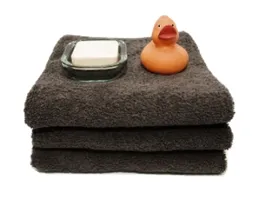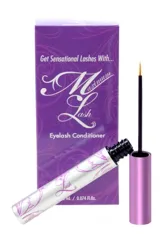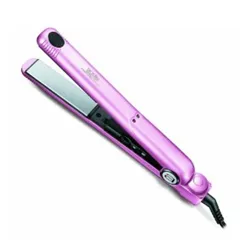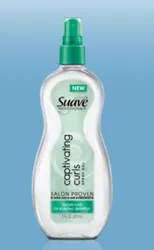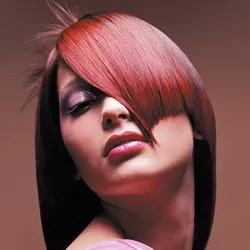
How To Steam Your Hair For Maximum Benefits
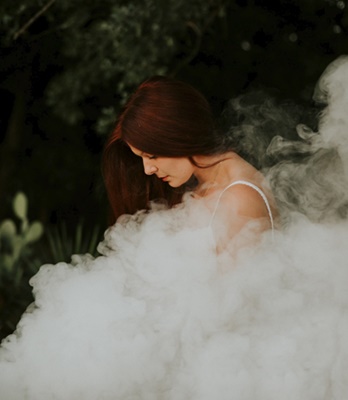 Photo by Averie Woodard on Unsplash
Photo by Averie Woodard on UnsplashHair steaming involves the application of moist heat from steam to your scalp, roots, hair, and skin.
The moist steam heat gently opens the hair cuticles to maximize all the benefits of scalp masks, deep conditioners, hair oils, or similar treatments.
The steam helps push the treatments deep into the hair's core to trigger the release of maximum hydrations and moisture enrichment.
Steam helps increase skin circulation, rejuvenating the scalp.
The hyperthermic effect of steam opens pores on the scalp and increases blood circulation to the roots and scalp.
Benefits Of Hair Steaming
Scalp, root, hair, and facial steaming aren't new. It's been around in some form or fashion for centuries.
Steaming has long been a natural solution for dry and lifeless hair.
Steaming isn't just for your hair. It provides fantastic benefits for your scalp, roots, and your skin too. It's also beneficial as the heat aids in hydrating dry hair leaving your parched tresses happy.
 Photo by Gloria Dolak on Unsplash
Photo by Gloria Dolak on UnsplashThe moist heat also encourages blood flow to circulate, promoting circulation to the scalp and roots which can support hair growth
Steam nourishes hair by opening pores. If you have dry hair, you also have a dry scalp.
It's important to note that steam won’t prevent balding. However, it will help improve the overall integrity of the hair and rehabilitate the scalp.
Steaming provides an epidural blood perfusion effect that helps rejuvenate the scalp and hair follicles, which may help limit hair loss in those with thinning hair.
A Great Treatment For Thirsty Hair
Over time, steaming helps improve elasticity and encourages long-term moisture retention.
When your hair is relaxed and or color-treated, steaming is one of the best things you can do to pamper your hair.
It’s a must for thirsty natural hair, especially Type 3 or Type 4. Whether you have porous or low-porosity hair, you can still benefit from steam therapy.
Start slowly to test steaming on your strands to determine if it's a good treatment option for your Hair Type (hair density, cuticle shape, porosity, or similar). Steam once a week. A weekly dose of steaming adds extra hydration to the hair.
How To Steam For Maximum Benefits
 Photo by Jason Leung on Unsplash
Photo by Jason Leung on UnsplashSteam lifts the hair cuticle allowing conditioning treatments to penetrate deeply into the hair shaft helping to heal damaged hair.
Regular hair steaming allows hair to retain moisture, increase softness and stimulate growth.
Detangle Hair Before Applying Conditioning Products
Always completely detangle your hair before steaming.
Work in small sections from ends up to roots. Be gentle and use smooth wide-tooth combs to remove any knots or tangles.
This is especially important if you plan to wet wash your hair after the steaming session.
Don't Cover Hair When Steaming
Covering your hair with a cap or plastic wrap will eliminate many steaming benefits.
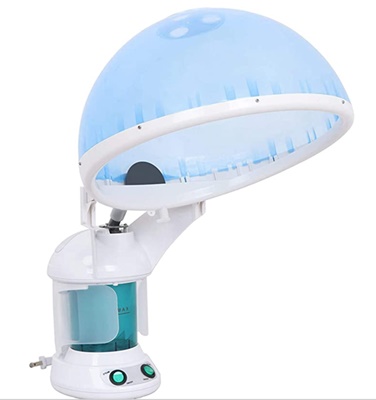 Nova Microdermabrasion Portable 3 In 1 Hair and Facial Steamer W/Bonnet Hood for Personal Home Use
Nova Microdermabrasion Portable 3 In 1 Hair and Facial Steamer W/Bonnet Hood for Personal Home UseEven covering with a towel will decrease benefits. Expose your hair directly to moist heat.
When you find that your hair tends to react strongly to a steaming session, wrap your hair in a towel for part of the session.
Or if your hair has a tendency to get frizzy from humidity, use a smoothing serum with either a silicone or light oil shine base.
Turn On Steamer Before Using
Depending on the steamer you use, you may need to give it anywhere from five to ten minutes for the water to bubble and the steam to heat up.
Some steamers may not need a lot of warm-up time. Read all the manufacturer's instructions before you proceed.
Apply Deep Conditioning Treatments
While steamer is heating up, apply deep conditioning treatments, masks, or similar to detangled, loose strands.
Make sure to cover the entire area of your scalp, roots, and strands with conditioner, including the nape of the neck.
Wrap Hair Up Into A Loose Twist Or Bun Full Steam Benefits
 Photo by Ayo Ogunseinde on Unsplash
Photo by Ayo Ogunseinde on UnsplashIt's essential to wrap your hair in a loose bun during a steaming session so that your middle and end sections receive the benefits of the conditioners and steam.
Make sure to always direct steam to your ends.
They are the oldest part of your hair and need to receive a deep conditioner's benefits under direct moist heat.
Allow Your Roots, Scalp, And Hair To Feel The Steam
Allow your hair to feel the steam so that the conditioner can penetrate and work effectively.
The direct steam melts the deep conditioner into your hair immediately.
The steam softens conditioning masks for ultimate integration with your roots, scalp, and follicles.
Make Sure To Focus Steam On All Parts Of The Head
 Photo by Justin Essah on Unsplash
Photo by Justin Essah on UnsplashNever neglect the nape of your neck or the edges. Some hair steamers may have a small hood that doesn't encompass your entire head with the edges or the nape of the neck.
This may pose a challenge when effectively covering every inch of your head.
Position your head to get a direct steam flow on the nape area. This area tends to be a trouble spot for most. Therefore it's essential not to forget it.
Wear An Absorbent Headband Or Keep Towel Handy
Steaming generates a lot of heat. Moisture may run down your face or drip onto your neck and shoulders.
Wear an absorbent headband to absorb any moisture, preventing it from dripping down your body. Use a towel, washcloth, or clean cotton cloth to wipe your face or body.
Manage Your Steam Time During Each Session
Depending on your scalp, roots, and hair needs, steam for 15-40 minutes during each session. Remain under the steamer for maximum hydration.
 Fine-tuning Fine Curly Hair - Sabrina May - Unsplash
Fine-tuning Fine Curly Hair - Sabrina May - UnsplashThe duration of your steam session is important to allow the cuticles to lift and absorb conditioning treatments.
It may seem boring to remain under the steamer for any amount of time.
Prepare yourself by bringing something to pass the time.
Cool Down
Allow plenty of time for hair to cool down completely after a steaming session. Make sure hair is cool to the touch before doing anything to the hair.
If you want to rinse the conditioning treatments from your scalp and hair, make sure your strands are entirely cool to the touch.
When the hair is cool to the touch, it signifies that the cuticles are officially closed, sealing all the conditioner benefits inside the hair shaft.
Finish With A Wet Wash And Cool Final Rinse
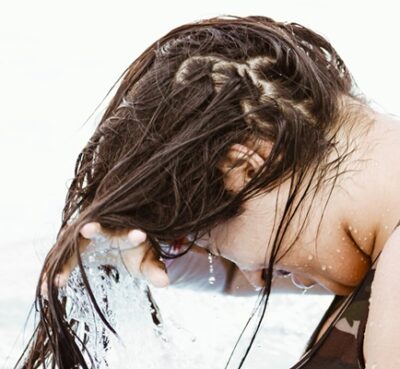 Photo by Erick Larregui on Unsplash
Photo by Erick Larregui on UnsplashHair-care experts recommend finishing a steam session with a wet wash with an appropriate cleanser, a good acid-balanced conditioner, and cool or cold water rinse.
After wet washing, conditioning, rinsing with a cool/cold water blast, and blot drying, apply a leave-in conditioning cocktail.
Allow hair to partially air dry and then finish drying with cool or cold air.
How To Avoid Hair Steaming Challenges
Not all hair is created equal and may or may not respond equally well to hair steaming.
Don't Overdo Hair Steaming
Hair steaming can become addictive. Don't fall into that trap.
 Photo by Lucy Dimitrova on Unsplash
Photo by Lucy Dimitrova on UnsplashWhen you oversteam, you may over-moisturize.
If your hair becomes too soft or moisturized, it can become weak, limp, and potentially break. Find a good balance for you and your hair.
Summary
The human scalp has five layers as well as hundreds of blood vessels and glands. Steam treatments can help to restore body, bounce, and shine to dry, damaged, or stressed out hair.
Steam can provide an invigorating and all-natural treatment.
There are many ways to deliver steam to the roots, scalp, and hair. These options range from the salon, spa, or at-home steamer hood treatments to steam baths or showers.
It's always possible to use steam from heat caps or handheld steamers. Remember that localized application is limited in intensity and scope.
While there are always exceptions to every rule, for most people, hair steaming treatments offer many benefits. It might just give you great results for dry scalps or damaged, moisture-starved strands.
Best wishes to all.Social Media Network Information
Please follow us on Twitter at: https://Twitter.com/HairBoutique. I look forward to meeting new people from all walks of Twitter and learning from their Tweets.



